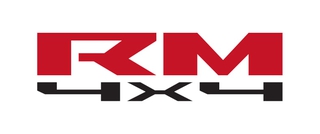RED MACHINE OÜ current status
This company's branding has already reached 2,296 peopleand his is followed by 8 Storybook users.On average, the company has been rated 4.3 points.but there is no comment.
's activity report 2022
Company's objectives and owners
The goal of Red Machine OÜ was to develop a small T3 category tractor based on Honda ATV. The company is based on Estonian capital and the owner is Reimo Esaul who owns 100% of the company.
Company's staff and salaries, company management
During the financial year, the company had six employees and the size of the wage fund was 78,174 euros.
The profit for 2022 was 28,444 euros and the profit for 2021 was 264,747 euros
Solvency ratios
Initial data (euro) 2021.a. 2022.a.
Current assets 724,530 446,446
Short-term obligations 320,968 302,671
Cash 125,373 180,307
Net profit 264,747 28,444
Sales revenue 4,909,271 3,931,322
Inventories 367,007 238,234
Financial ratio Formula 2021.a. 2022.a.
Short-term debt coverage ratio Current assets / Short-term obligations 2.26 1.48
Liquidity ratio Cash / Short-term obligations 0.39 0.60
Liquidity ratio Current assets - Inventories / Short-term obligations 1.11 0.69
Net profitability Net profitability%=net profit/sales revenue*100 5.39% 0.72%
The short-term debt coverage ratio shows the relationship of liquid assets to short-term obligations. How many times current assets cover short-term obligations. A coverage ratio of 1.6 and more is considered good, 1.1 and less is weak.
The liquidity ratio shows the company's readiness for immediate coverage of short-term obligations. A ratio of 0.3 is sufficient for readiness, 0.5 and more shows inefficient cash management in the company.
The liquidity ratio shows liquid assets for covering short-term obligations. This ratio is also called the level of urgent payments. A solvency ratio of 0.9 or more is considered good and 0.3 and less is weak.
Net profitability shows what part of the profit makes up the company's sales turnover. All costs have been taken into account in highlighting this indicator. It shows what part of the sales turnover remains for investments and development.
Reimo Esaul, board member




Comments (0)